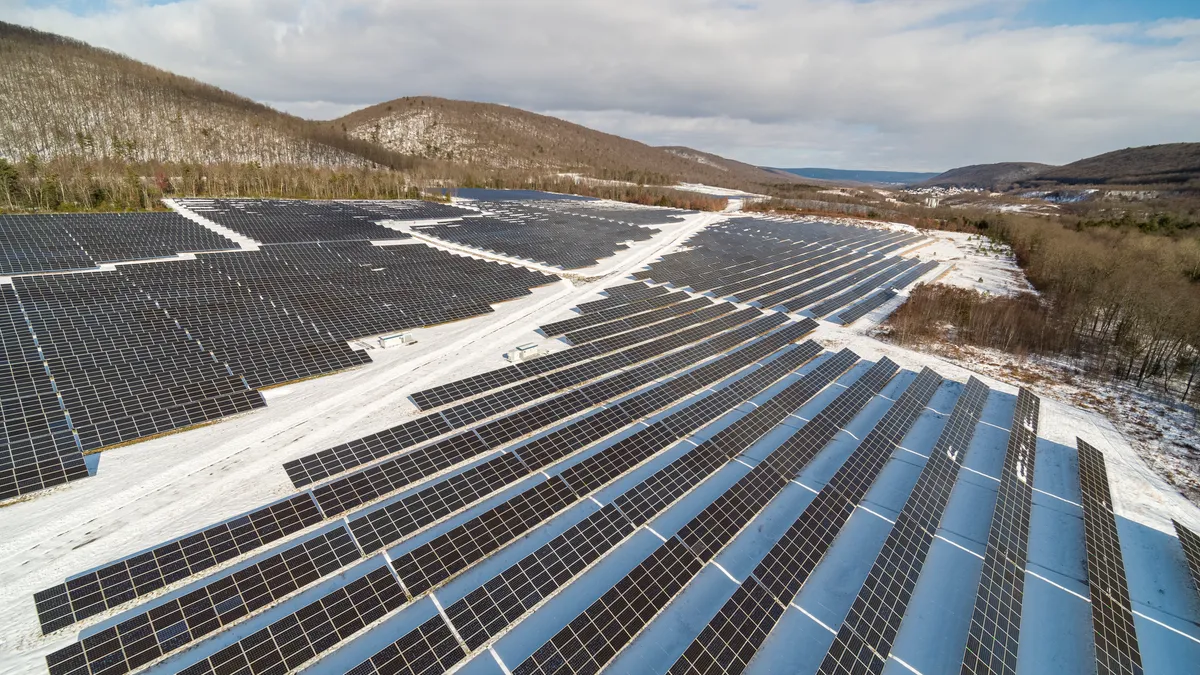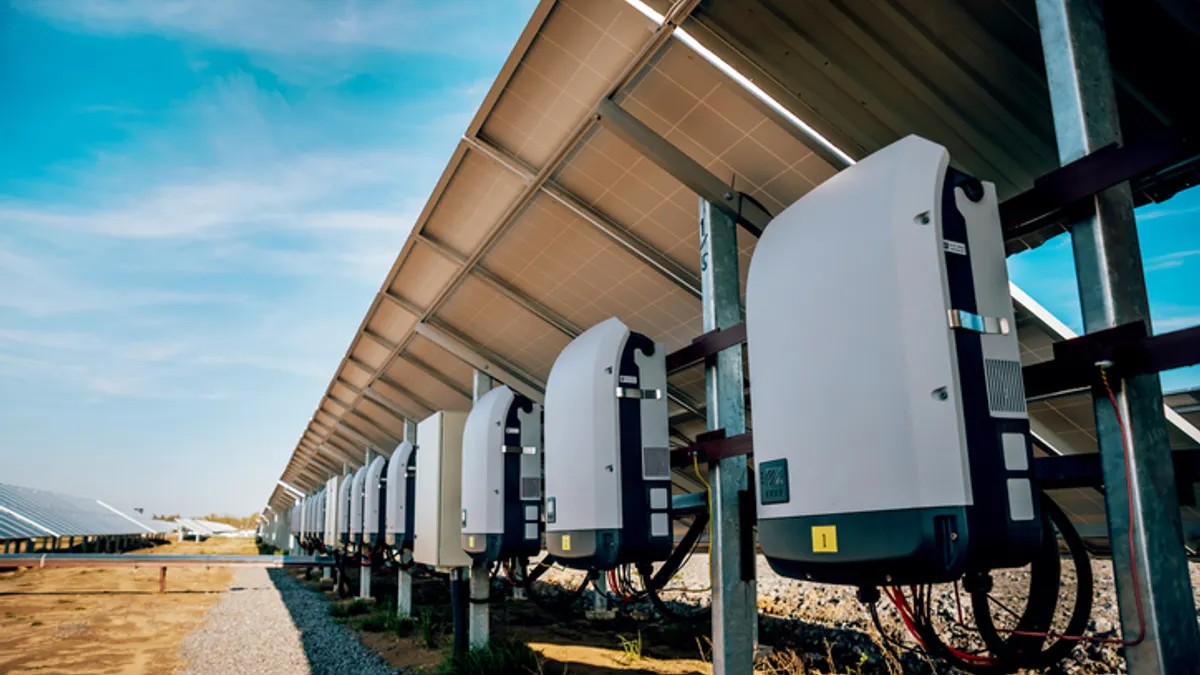Dive Brief:
-
The average cost for generators to connect to the grid in the PJM Interconnection soared from 2020 to 2022 compared to previous two-year intervals, largely driven by network upgrades beyond the interconnecting substation, according to a study released Thursday by the Lawrence Berkeley National Laboratory.
-
Average interconnection costs for projects in PJM’s interconnection queue have increased eightfold to $240/kW in the 2020 to 2022 period from $29/kW in the previous two years, Berkeley Lab researchers said.
-
In the last five years, the potential interconnection costs for renewable energy facilities — energy storage at $335/kW, solar at $253/kW, onshore wind at $136/kW and offshore wind at $385/kW — are sharply higher than for natural gas-fired power plants at $24/kW, according to the report.
Dive Insight:
The Berkeley Lab report highlights one aspect of the renewable energy build-out in the United States: Who pays for the cost of building the grid upgrades needed to bring new generators online?
In many cases, the power plant developers pay those costs. They argue, however, that network upgrades often provide broad benefits to the grid and that the cost of the upgrades should be shared widely.
PJM is studying more than 2,700 generating projects totaling about 25 GW, according to the grid operator. More than 95% of the capacity in the interconnection study process is wind, solar and storage as well as hybrids of solar or wind with batteries.
The Berkeley Lab researchers said that for projects with completed interconnection studies, average interconnection costs jumped to $84/kW between 2020 and 2022 from $42/kW before 2020.
The interconnection costs for projects that withdrew from PJM’s study process soared to $599/kW in 2020-2022 from $255/kW in 2017-2019, according to the report.
Interconnection costs for active and withdrawn storage and solar hybrid projects are “surprisingly high” at $337/kW, but costs for completed storage projects are $4/kW and solar hybrid projects are $20/kW, the Berkeley Lab researchers said.
“High costs for storage and solar hybrid applicants seem surprising at first, as their operational flexibility should enable such projects to respond to transmission constraints if dispatched in response to local grid needs,” the researchers said. “But it appears that, despite storage’s locational flexibility, many prospective projects have been proposed in regions with high transmission line loadings.”
PJM operates the grid and wholesale power markets in 13 Mid-Atlantic and Midwest states and the District of Columbia.
Berkeley Lab released a similar report in October looking at rising interconnection costs in the Midcontinent Independent System Operator footprint.















